by Karen Tee
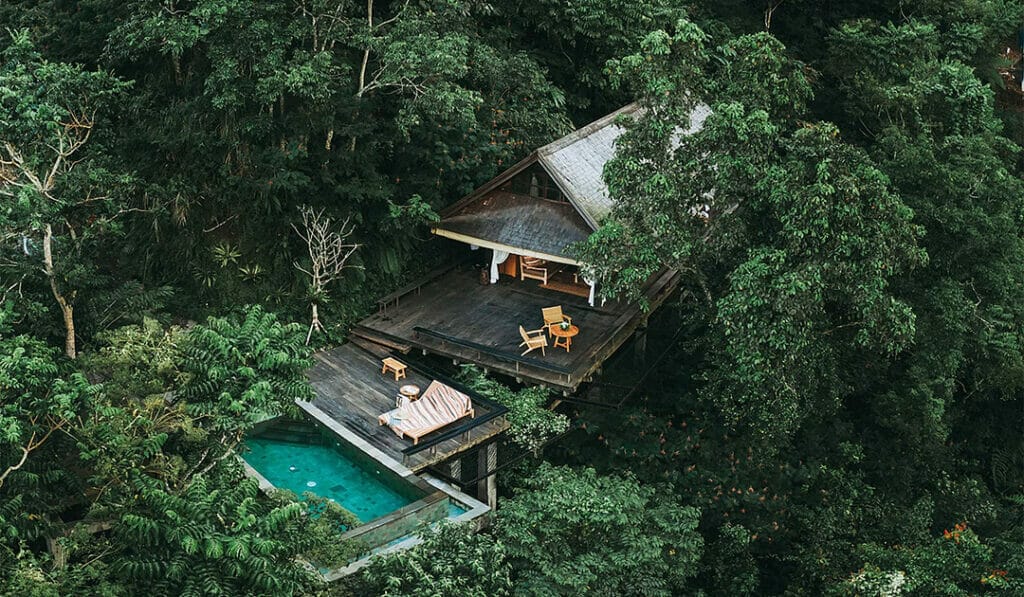
At Koh Haa, a snorkelers’ paradise in a cluster of islands surrounding a calm lagoon off Krabi, Thailand, I gently slip into the crystal-clear turquoise sea so as not to spook the fish.
It is an unforgettable experience to be swimming with such an abundance of marine life, especially in pristine waters where I can simply look down and see the thriving, vibrant corals in shades of green, yellow, and orange. In addition to scuba diving sites, the area is also home to rare whale sharks, the largest fish species alive today.
Preserved tropical paradise
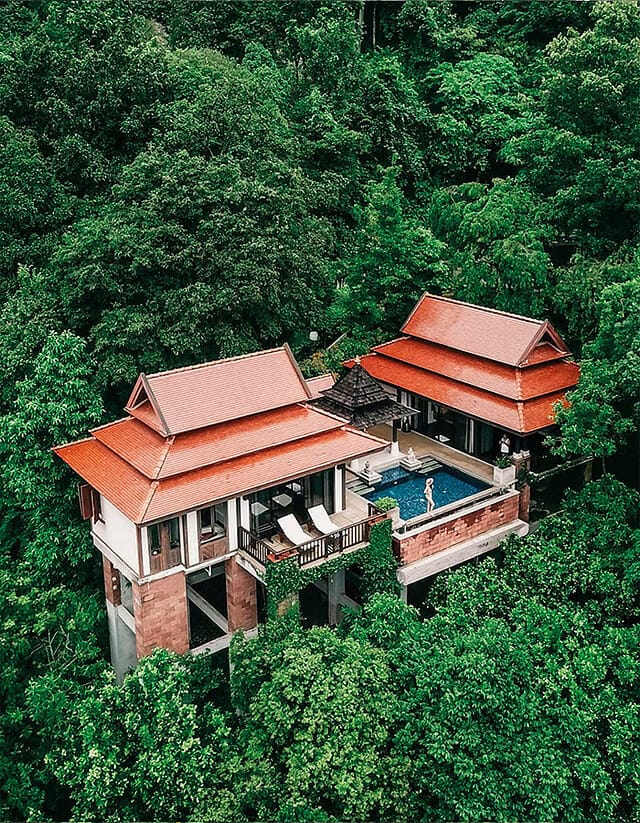
Credit: Pimalai sits on 40ha of lush rainforest. (Photo: Pimalai Resort & Spa)
To experience this bounty of nature, stay on the relatively secluded island of Koh Lanta, accessible by diving boats from Krabi. Pimalai Resort & Spa, one of 53 properties around the world that are part of the Small Luxury Hotels of the World’s Considerate Collection, is just 16km from these sites.
The family-owned Thai resort sits on 40ha of lush tropical rainforest and boasts a picture-perfect, 900m powdery white sand beach (this is not an exaggeration). Former lawyer Anurat Tiyaphorn and a group of investors purchased the plot of land 21 years ago to preserve this piece of practically untouched paradise.
Tiyaphorn’s family has taken on stewardship of the island’s natural environment to maintain Koh Lanta’s tourism industry.
“Koh Lanta relies very heavily on tourism — even the fishermen sell more of their fish to hotels and restaurants than they consume themselves,” says Charintip Tiyaphorn, Anurat’s daughter and Pimalai’s owner representative.

Credit: The snorkelers’ haven of Koh Haa is easily accessible from Koh Lanta, where Pimalai Resort and Spa is located. (Photo: Pimalai Resort & Spa)
“Tourists come here to enjoy nature. It is a true tropical island surrounded by a national marine park, with mountains, forests, beaches, the ocean, waterfalls, and caves. Without this beautiful nature, there is very little else to do on the island.”
As part of the team’s efforts to raise awareness of marine conservation, the group has released clownfish and started a coral propagation project at Koh Haa. Tiyaphorn adds that the resort also conducts regular coastal cleaning activities, forbids motorised water sports, and only permits small-scale eco-sensitive excursions.
Last year, the resort’s team worked with Krabi province government officials, the local district, and the Royal Thai Navy to release sea turtles along the Pimalai beach, whose clean shores are ideal for turtle nesting. According to Tiyaphorn, setting an example for the local community is one of the goals. As she observed, students and business operators attending the turtle release event were eager to keep their beaches clean to release turtles themselves one day.
Importance of sustainability
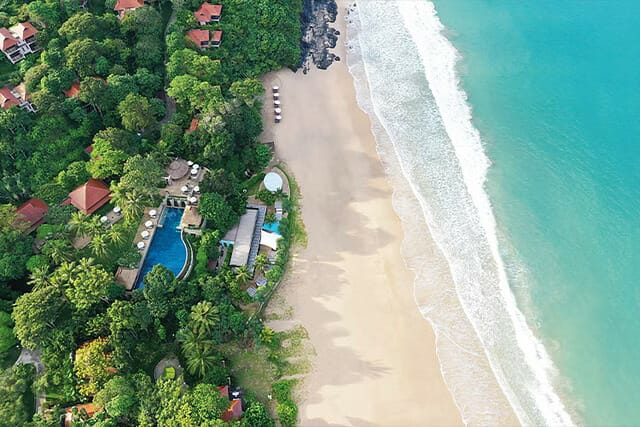
Credit: The resort has almost a kilometre of powder white beach. (Photo: Pimalai Resort & Spa)
Luxury comes in the form of retiring to comfortable digs without requiring an extended ferry ride back to Krabi. The resort’s spacious accommodations are strategically spread out across the estate to offer maximum privacy, almost as if one is cast away on a desert island.
As part of its conscious approach, the five-star resort has implemented various sustainable management practices. To prevent overloading the island’s infrastructure, Pimalai has its own reservoirs, water treatment systems and recycling systems. By eliminating single-use plastics and composting food waste, it is actively reducing garbage. The resort has reduced landfill waste by 80 per cent to date.
It is refreshing to visit a property that goes above and beyond lip service when it comes to its sustainability efforts — a factor that is becoming increasingly important to jet-setters. According to Booking.com’s 2022 Sustainable Travel Report, 77 per cent of Singapore-based travellers consider sustainability in their travel plans. Of the respondents, 56 per cent would feel more at ease if they knew a particular accommodation was sustainable.
Often, this sense of social consciousness is contagious in the best possible way. To keep such beautiful surroundings clean, I find myself looking for litter during my evening strolls along the beachfront.
The Ayung River wound its way through dense jungle at the site’s base, embellished with a stunning waterfall. Dharmali Kusumadi, Banyan Tree Head of Architecture, on discovering the site
Into the jungle
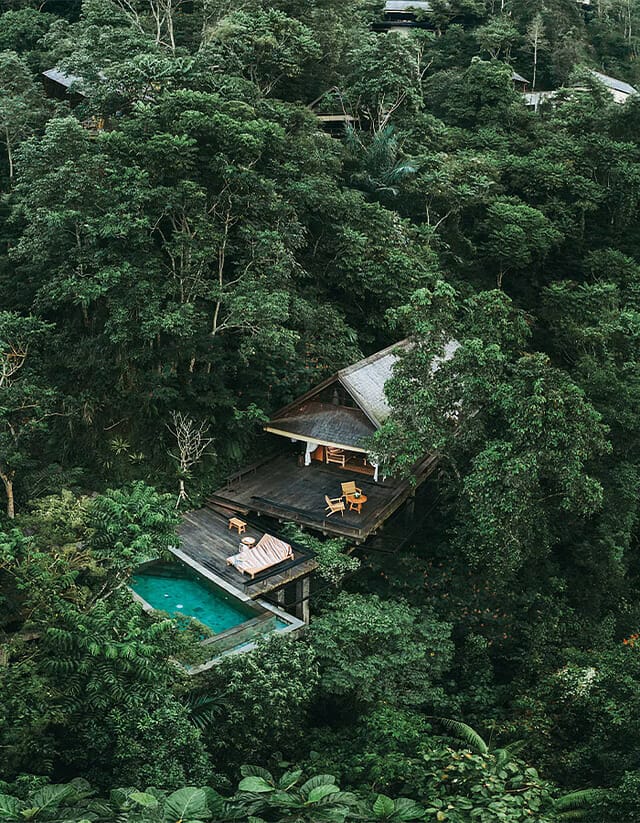
Credit: Banyan Tree Escape: Buahan provides luxurious stays deep in the Balinese jungle. (Photo: Banyan Tree Group)
I also visit the new Banyan Tree Escape: Buahan, deep in the Balinese jungle. The Singapore-based group is already known for its commitment to green practices and its Escape concept, which seeks to envelope guests in the natural environment through its resort design.
Perched on the edge of a mountain, the estate overlooks a lush tropical rainforest in Buahan Kaja Village, about 30 minutes from Ubud. The Banyan Tree Group spent 22 years designing a resort that would evoke a sense of living in a jungle without compromising on comfort.
When it first saw this site, Banyan Tree head of architecture Dharmali Kusumadi knew it would require a light touch. “At the crack of dawn, we found ourselves facing a magical view of seven mountains skirted by a forest reserve, which disallows future developments that would ruin the view,” he says.
“The Ayung River wound its way through dense jungle at the site’s base, embellished with a stunning waterfall. At that moment, we realised we’d stumbled on the beginning of a new adventure.”
Based on years of research into the area’s geology and vernacular architecture, Banyan Tree began building 16 villas inspired by Balinese bale banjars (traditional single-roofed open-deck buildings) in 2017. In addition to ensuring each villa blended into its surroundings, the team also used recycled local ironwood and fast- growing bamboo as key materials.
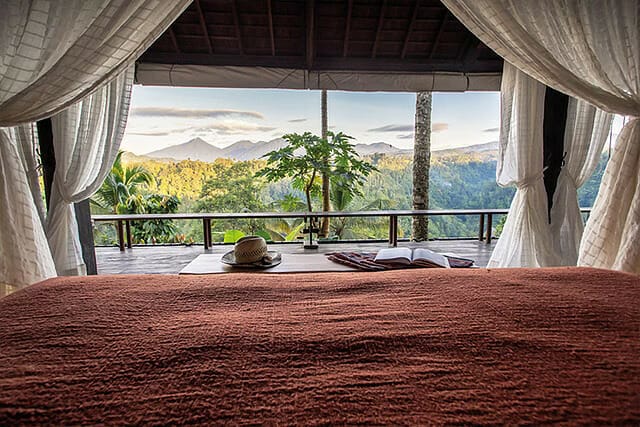
Credit: Buahan’s view of the seven mountains at the crack of dawn. (Photo: Banyan Tree Group)
In the construction phase, they also avoided clearing large swathes of the dense jungle by relying on traditional methods to transport and fasten materials instead of heavy machinery.
The results speak for themselves. In each of the “no walls, no doors” villas, there is a living room and a private plunge pool, making me feel like Balinese royalty without sacrificing my proximity to the jungle. As I soak in a handmade copper bathtub one lazy afternoon, I observe a few curious squirrels scuttling on my deck while birds flutter among the foliage.
During turndown service, gauze drapes are lowered to keep insects out while allowing me to feel like I am glamping under the stars. I fall asleep within a few minutes of listening to the buzz of cicadas. In the morning, I am awakened by the first rays of sunlight and birdsong. Then, as I stumble through the veil, I see the mist-shrouded seven mountains.
When nature calls in all its splendour, who needs alarm clocks and coffee?

